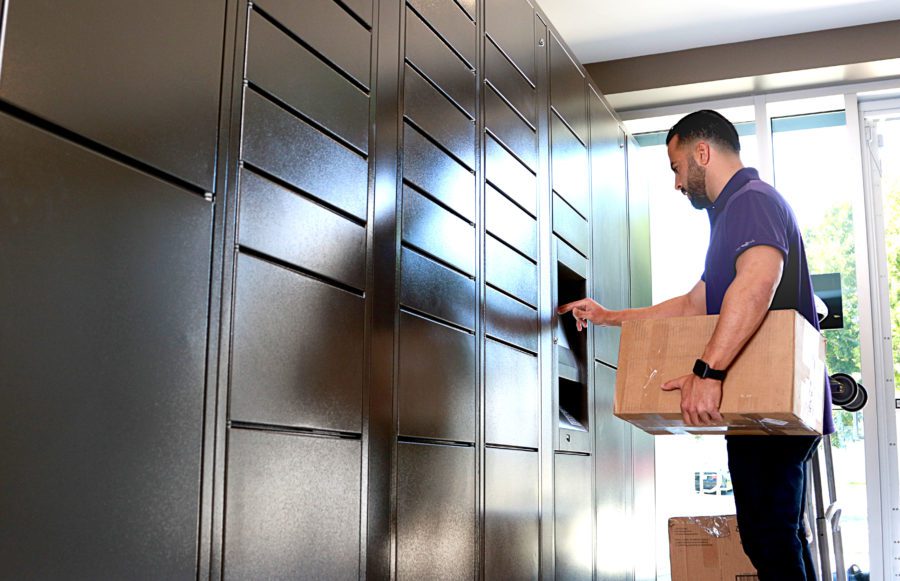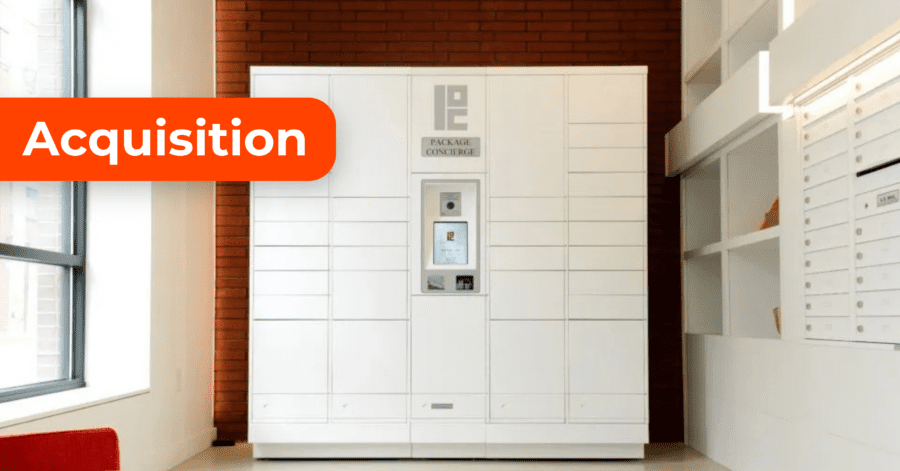
Commercial
Helpful Tips and Tricks For Office Managers
Written by: Parcel Pending
8 Min Read
Published: July 13, 2019
Updated: March 29, 2023
As an office manager, one of the hardest aspects of the job is juggling the various and sundry tasks you need to get done each day. Your time is limited and precious. And even if you work past the standard 8-hour day you might feel as if you’re barely keeping your head above water.
But your team relies on you for organization and efficiency. The role of an office manager is infinitely varied and rigorous. Each office environment operates like its own ecosystem, with you directly responsible for the success of its employees through creative problem solving, organization, and time management. A good manager can handle current challenges while anticipating future ones. While every workplace is different, there are a wealth of new and exciting tools out there to keep you—and everyone else!—on track.
Tips to Effectively Manage an Office
Snacknation recently conducted a study that polled hundreds of office managers from various industries. When queried about their top challenges, 37.5% of respondents claimed that their primary issue was an intense workload and not enough time to get it done. The study found that:
“This was true despite the fact that office managers tend to work long hours. Nearly half of respondents reported working more than 8 hours a day on average. 14% were putting in 10 hour days.”
With this in mind, we’re sharing afew of the ways you can make your day run more efficiently. Here are eight of our favorite office manager tips and tricks for keeping your office running smoothly:
- Plan ahead
- Set SMART goals
- Make your workspace work for you
- Upgrade your ‘To Do’ list
- Look for “time sucks”
- Let packages sort themselves with commercial lockers
- Streamline communications
- Learn to delegate
1. Plan ahead
Avoid finishing up for the day without an actionable plan for the next day. Starting your work day with the dread that there’s so much to do and so little time can create a state of decision paralysis that impacts decision-making or causes you to be aimless and listless as you go about your day.
Ideally, you should end your workday by briefly outlining the 5 most important tasks you need to address on your to-do list for the following day. Doing this will remind you to focus on those important tasks so that you will be more productive with your day and feel more accomplished when you get them done.
2. Set SMART goals
Goal setting is the crux of practically any time management strategy and is a key organizational skill to boosts efficiency. It allows you to focus on and tackle specific issues, both in the short- and long-term. These days, many office managers will set “SMART” goals so that they have a clear understanding of who is responsible for each goal, what the steps to accomplish the goal are, when those tasks will be completed, and why this goal is important to the business. “SMART” is an acronym that can help you guide your goal-setting practice; it stands for:
- Specific – Goal states exactly what needs to be done.
- Measurable – Goal can be measured or analyzed with tools or software.
- Attainable – Clear goals that aren’t vague or “pie in the sky” but are actually feasible.
- Relevant – Set tasks for yourself that will create immediate and positive impacts.
- Time-bound – Create due dates and timelines for tasks to be finished.
Setting SMART goals helps you break up work, create deadlines, manage workflow, and enjoy small victories with each checked or crossed-out task.
3. Make Your Workspace Work For You
It’s impossible to stay organized in a chaotic office space. Keeping your desk neat and serviceable sets a strong foundation for your own efficiency. Gone are the days of crowded, cluttered workspaces, tangled power cords, and overstuffed letterboxes. With the “next normal” of hybrid office design, the new standard for work space organization is a flexible office space that fosters collaboration and communication. Here are a few tips to keep you organized and help you focus even on the craziest days:
- Use a streamlined charging station for all your devices. That way, there are no tangled cords, and you can even mix and match different phone chargers to ensure they are accessible to anyone.
- Take care of your health using ergonomically correct keyboards, chairs, and desks.
- Utilize vertical space by investing in a tower-style desk organizer. Try implementing an organizational system to keep the most pressing papers on top, decreasing urgency on each shelf so your workflow is uninterrupted by wasting time and searching for something due today.
4. Upgrade Your To-Do List
Gone are the days of colored sticky note cluttering every surface. Never lose a to-do list again by introducing the world’s best organization apps into your life. There’s something for every office manager—the writer, the visual thinker, the multitasker. Here are three favorites for task management:
- Momentum: Momentum greets you with a stunning photograph that’ll get you thinking about your next vacation. But before you get too distracted, check out their To-Do list feature. It’s simple, streamlined, and you get the satisfaction of checking a box to wipe your list at the end of a productive day.
- Evernote: This one is for the writers out there. Not only can you create a detailed daily to-do list, but you can combine all your note-taking needs in one place. Evernote’s templates are particularly useful in a time crunch, so you don’t have to spend any valuable work time building your own documents from scratch.
- Wunderlist: Wunderlist’s highly functional design allows you to manage many lists simultaneously, set reminders, keep track of important notes, and even create voice recordings. Best of all, invite coworkers to collaborate to get lists checked off concurrently.
5. Look for “Time Sucks”
You may notice that certain tasks are being done inefficiently and/or are taking up far too much of your time. Audit your to-do list and goals regularly to ensure that your business priorities align with your day-to-day task list, and consider automating processes that eat up too much of your time.
An example of this might be your package management system. If your business receives multiple packages per day, each time a delivery arrives, you may need to disrupt your workflow and spend roughly five minutes of your time signing, sorting, and delivering the package to its intended recipient. By installing smart package lockers, such as those made by Parcel Pending, you could save thirty minutes to an hour of time each day that you’d otherwise be spending playing postman. Embracing new technology in the workplace with smart lockers will bring a new wave of efficiency to modern office systems.
6. Let Packages Sort Themselves
With the exponential growth of online shopping, ensuring each package is delivered to its owner can feel like a full-time job. Having boxes pile up next to your desk is stressful and can mean an increase in lost packages and accidental pick-ups of the wrong items.
Hand off the role of ‘mailman’ to new technology in the workplace like Parcel Pending’s customizable storage locker. A locker delivery system ensures everything is received as securely as possible through a few easy steps:
- The Parcel Pending mobile app lets each person track their personal package delivery.
- Built-in cameras capture each delivery and each pick-up to ensure packages fall into the right hands.
- Scanning a barcode enables rapid package delivery and retrieval.
- Parcel Pending lockers receive deliveries from all couriers, so every package is deliverable 100% of the time.
Not only is this an efficient way to manage and organize your office, but it doubles as an innovative staff member perk that allows for on-demand access to packages and other internal deliveries (e.g., onboarding documents, IT equipment, uniforms, or tools)..
7. Streamline Your Communication Channels
You know what it feels like to repeat the same message over and over again. Keeping up with everyone’s preferred method of communication and scheduling can be overwhelming. Thankfully, there are new platforms available to improve back and forth every day. Below are a few of the most efficient communication channels to improve the success of the workplace:
- Calendly: Calendly is the easiest way to automatically schedule meetings without the agonizing back-and-forth between parties. You can connect up to six calendars to check availability automatically. Notifications keep everyone updated while setting a ‘minimum scheduling notice’ ensures there’s always enough time to prepare.
- Basecamp: Get everyone organized in one place. Basecamp works best for communications surrounding projects in collaborative office spaces. Project-specific message boards mean everyone is in the loop, and no one receives alerts that don’t directly concern them.
- ActiveInbox: ActiveInbox ensures no email communications or follow-ups slip through those proverbial internet cracks. It’s a seamless email management tool that allows you to turn messages requiring action into tasks. The ‘send later’ function is a lifesaver; you don’t have to rely on your own memory to reply in a timely manner, especially if you’re spread across different time zones.
8. Learn to Delegate
Because they wear so many hats, many office managers take on, get assigned, or are stuck with administrative tasks that fall outside their purview. Sometimes you may assume it’s easier to handle on your own than take the time to train someone else. That said, delegating tasks that don’t require your time or that could be done by someone else (like another employee lower on the staff totem pole, or an intern) is an important part of being an office manager. At some point, you will need to relinquish tasks that don’t necessarily require your attention in favor of those that someone else couldn’t do.
An Office Management Strategy That Fits Your Needs
Managing an office is no easy task. Often, it can feel like a thankless and stressful role. It’s a career path that takes years of experience, a tremendous skill set, and a true “people person” to do the job. An office manager must possess a combination of skills, including administrative skills, leadership skills, and management skills.
However, by taking steps to increase efficiency and use your time more wisely, you can ensure that you’re prepared on a daily basis and reduce the stress that you put on yourself. Don’t be afraid to mix and match these office management tips to develop a customized solution for your office space. As an office manager, you know your workplace best and can incorporate new services and apps based on our company culture. Pick and choose which tips and tricks you like best to maximize your efficiency and contribute to a thriving workplace.
By following these management tips and finding areas where new tech could increase productivity, you can be an office manager all-star.
Sources:
- Snacknation. 11 Effective Time Management Tips for Busy Office Managers. https://www.snacknation.com/blog/time-management-tips-office-managers/
- Rampton, J. Forbes. Manipulate Time With These Powerful 20 Time Management Tips. (2018). https://www.forbes.com/sites/johnrampton/2018/05/01/manipulate-time-with-these-powerful-20-time-management-tips/#6bb5ff0857ab
- Osterhaus, E. Quickbooks. 8 time management tips to grow your small business. https://quickbooks.intuit.com/r/employees/8-tips-for-effective-time-management/
- Nation Master. Online Shopping Trends 2019 & Key Figures – What You Need to Know. January 14, 2019. https://www.nationmaster.com/ecommerce
- NY Mag. The Best Ergonomic Keyboards and Mouses to Prevent Wrist Pain. http://nymag.com/strategist/article/best-ergonomic-keyboards-mouses-prevent-wrist-pain.html



